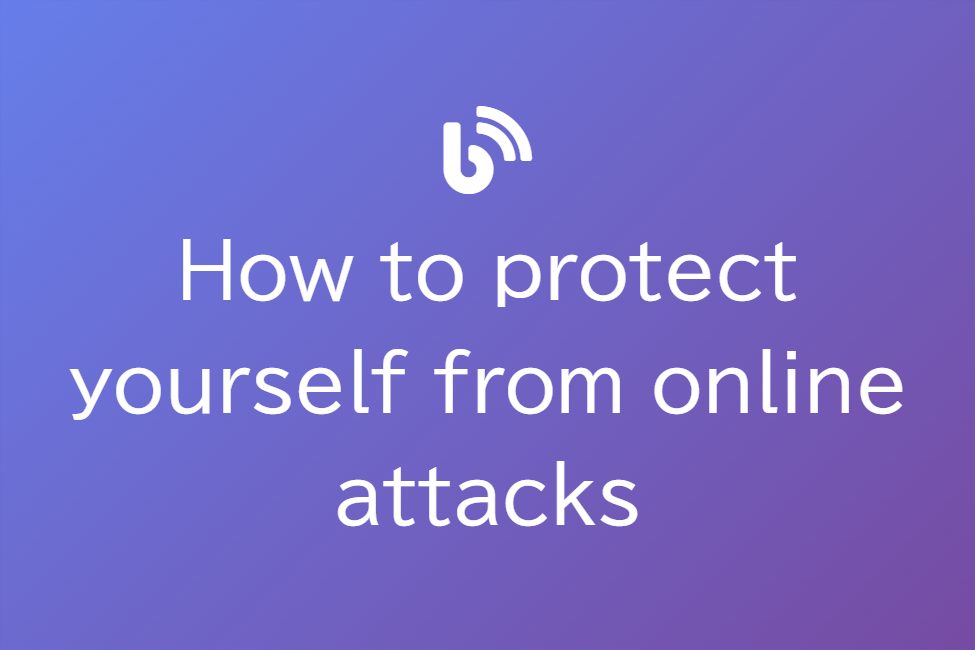The growth of the digital economy is driving private and public organizations to look for new solutions and ways to protect online assets. Along with the development of the cyber industry, the interest of digital fraudsters in company data is also growing, attackers are using more and more diverse attack methods, for example, phishing, DDoS attacks, interception of remote sessions.

Ensuring your safety from online attacks is of utmost importance in today’s digital age. To shield yourself from potential threats, it is crucial to adopt a proactive approach and implement effective security measures. Firstly, always keep your devices, such as computers, smartphones, and tablets, up to date with the latest software and security patches. Regularly installing updates helps to fix vulnerabilities that hackers may exploit.
Another vital step in safeguarding yourself is to create strong and unique passwords for all your online accounts. Avoid using easily guessable passwords like your name or birthdate. Instead, opt for a combination of uppercase and lowercase letters, numbers, and special characters. Additionally, it is advisable to enable two-factor authentication whenever possible. This adds an extra layer of security by requiring a verification code in addition to your password.
Be cautious when clicking on links or downloading files from unknown sources. Cybercriminals often use phishing emails or malicious websites to trick unsuspecting users into revealing sensitive information or infecting their devices with malware. Always verify the legitimacy of the sender or website before taking any action. Furthermore, it is wise to use reputable antivirus software and regularly scan your devices for any potential threats. By following these precautions, you can significantly reduce the risk of falling victim to online attacks and protect your personal information.

Table of Contents
But the most insidious attacks today are zero day attacks: they are difficult to detect even for the most technologically savvy businesses, and correcting the consequences can take a lot of time and resources. For example Due to the vulnerability ( libraries of the Java programming language) in Log4J , an attacker can remotely execute any code on the target computer. This allows you to steal data, install malware, or take control of your device. All this means that cyber defense measures must constantly evolve.
1. Be careful while giving any authentication :
User credentials are another door to company information for attackers. Use multi-factor authentication when logging into your account, restrict access rights for employees, create complex passwords without being tied to real names or company names. Update your passwords at least three times a year. So, even if the company’s credentials are stolen, cyber fraudsters will not be able to enter its network.
2.Network and data security has to be increased:
Constantly improve the company’s network security tools and methods: install and constantly update antiviruses, keep applications and programs settings up to date, increasing system fault tolerance. Backup is an important point. So companies can quickly recover critical information even in the event of an attack. It is important to apply the principle of security Zero Trust, when every time you log in, any user and device must authenticate the data.
3.EDR platform :
Endpoint Detection and Response is a new platform for combating new types of attacks, ransomware and the consequences of inattentive end-user activity. It not only protects companies from fraudsters, but also quickly identifies new threats of any complexity. To do this, the EDR platform uses sensors installed at endpoints that monitor activity in the system and help prevent cyber attacks even before they damage the organization.
4.Threat Intelligence:
Analyze any attacks of your working company and other companies, already happened or potential. This principle helps to prevent attacks before they occur, or to make life as difficult as possible for cybercriminals. Monitor to identify vulnerabilities, properly configure systems, and have appropriate patches. Carefully evaluate which systems to place on the external network.
5. Have plan to combat online attacks:
You must have a plan of action. This applies to both the business continuity plan itself and the cyber crisis plan. Write in it how the responsible structural units should act in each situation. The preparation of such a plan contributes to the revision of IT systems, the discovery of vulnerabilities and the improvement of business processes. Well, from time to time, simulate cyber attacks and test the system to check the effectiveness of protection measures and the vigilance of employees.
The world is changing, traditional means of cyber defense are no longer enough. It is necessary to keep an eye on what is happening in the deep web. That is, it is necessary to proactively monitor potential threats not only in the visible Internet, but also in the invisible one, to study the logic and methods of potential attacks.
Discover more from TechResider Submit AI Tool
Subscribe to get the latest posts sent to your email.
